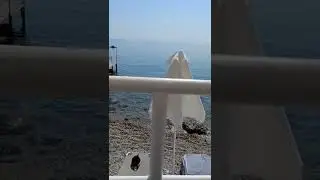Arduino tutorial - Interfacing LCD with Arduino with simulation for beginners
▬ Contents of this video ▬▬▬▬▬▬▬▬▬▬▬▬▬▬
0:00 - Introduction
0:18 - Write a code to Interfacing LCD
1:38 - Compile code & generate.Hex File
2:31 - Create a proteus schematic
6:08 - Run & test Simulation
▬ Introduction ▬▬▬▬▬▬▬▬▬▬▬▬▬▬
The Serial Monitor is a convenient way to view data from an Arduino, but what if you want to make your project portable and view sensor values without access to a computer? Liquid crystal displays (LCDs) are excellent for displaying a string of words or sensor data.
Welcome to our YouTube channel! In this educational video, we will provide a step-by-step tutorial on how to interface an LCD with an Arduino, specifically designed for beginners. With the added stimulation, this guide is perfect for those who are new to Arduino or want to brush up on their skills. Throughout this tutorial, we will cover the basics of Arduino, including hardware, software, and coding. We will also walk you through an example project and demonstrate how to control an LED with Arduino.
If you're looking to expand your knowledge in Arduino and want to understand how to connect and use a character LCD, whether it's a 16x2, 16x4, 16x1, or a 20x4 display using Hitachi's LCD controller chip, the HD44780, this video is for you! Subscribe to our channel to stay updated with more Arduino tutorials and projects. Don't miss out on this opportunity to enhance your Arduino skills and explore the potential of LCD interfacing.
Join our community of Arduino enthusiasts today! Get ready to dive into the exciting world of Arduino programming.
Let's get started!
▬ Code to Note ▬▬▬▬▬▬▬▬▬▬▬▬▬▬
❶ LiquidCrystal(): Creates a variable of type LiquidCrystal. The display can be controlled using 4 or 8 data lines. If the former, omit the pin numbers for d0 to d3 and leave those lines unconnected. The RW pin can be tied to the ground instead of connected to a pin on the Arduino; if so, omit it from this function’s parameters.
❋Syntax:
LiquidCrystal(rs, enable, d4, d5, d6, d7)
LiquidCrystal(rs, rw, enable, d4, d5, d6, d7)
LiquidCrystal(rs, enable, d0, d1, d2, d3, d4, d5, d6, d7)
LiquidCrystal(rs, rw, enable, d0, d1, d2, d3, d4, d5, d6, d7)
❷ begin(): Initializes the interface to the LCD screen, and specifies the dimensions (width and height) of the display. begin() needs to be called before any other LCD library commands.
❋Syntax:
lcd.begin(cols, rows, charsize)
❸ clear(): Clears the LCD screen and positions the cursor in the upper-left corner.
❋Syntax:
lcd.clear()
❹ setCursor(): Position the LCD cursor; that is, set the location at which subsequent text written to the LCD will be displayed.
❋Syntax:
lcd.setCursor(col, row)
❺ print(): Prints text to the LCD.
❋Syntax
lcd.print(data)
lcd.print(data, BASE)
▬ Result ▬▬▬▬▬▬▬▬▬▬▬▬▬▬
The Serial Monitor is a convenient way to view data from an Arduino, but what if you want to make your project portable and view sensor values without access to a computer? Liquid crystal displays (LCDs) are excellent for displaying a string of words or sensor data.
▬ Interesting Projects ▬▬▬▬▬▬▬▬▬▬▬▬▬▬
❶ PIC MCU Series: • PIC Microcontroller Series
❷ 805X series: • 89c5X Microcontroller Series
❸ ARM Series: • ARM Microcontroller Series
❹ Lilypad Series: • Lilypad Series
❺ AVR Series: • AVR Microcontroller Series
❻ DIY Series: • DIY Series
❼ Arduino Series: • Arduino Series
❽ Proteus series: • Proteus Software Series
▬ Let’s connect on ▬▬▬▬▬▬▬▬▬▬▬▬▬▬
🏷️WhatsApp: https://whatsapp.com/channel/0029VaEw...
🏷️Telegram: https://t.me/electronicsdeveloper
🏷️Facebook: / electronicsdeveloper
🏷️Instagram: / electronics.developer
🏷️Tweeter: / electronics_dev
🏷️LinkedIn: / electronics-with-shreyash
🏷️Pinterest: / electronicsdeveloper1
▬ Credits ▬▬▬▬▬▬▬▬▬▬▬▬▬▬
1. Arduino Community: http://bit.ly/38J91rx
2. Arduino Libraries: https://www.theengineeringprojects.co...
Thanks for watching!
#electronicsdeveloper
#arduinotutorials #lcd #alphanumeric



![Thanos vs Thor | Avengers: Sonsuzluk Savaşı (2018) | Türkçe Dublaj [1080p]](https://images.videosashka.com/watch/agVfb0KyT00)



